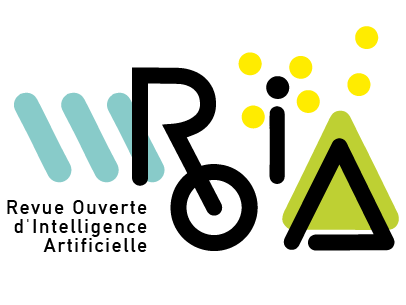Le liage de données dans les graphes de connaissances est un problème crucial et de longue date ; il consiste à déterminer des liens d’identité entre les descriptions des entités de deux graphes désignant une même entité du monde réel (e.g., même personne, même livre, même protéine). Les clés, qui sont des sous-ensembles de propriétés permettant d’identifier chaque instance dans un graphe, sont des éléments importants pour la découverte de ces liens d’identité. L’approche classique de liage de données fondée sur les clés consiste à découvrir un ensemble de clés dans chaque graphe, et d’appliquer ensuite une procédure de fusion des ensembles de clés obtenues. Cependant, cette approche peut conduire à la réduction du nombre de clés valides dans les deux graphes et peut parfois être très coûteuse en temps de calcul. Nous proposons dans ce travail une nouvelle approche de liage de données fondée sur le transfert de clés découvertes sur un graphe source vers un graphe cible impliqué dans la tâche de liage de données. Ce transfert s’appuie sur un alignement de propriétés connues a priori et sur le calcul de métriques permettant de valider la qualité des clés transférées vers le graphe cible. Nous avons conduit des expérimentations sur plusieurs jeux de données extraits du web de données (DBpedia, Wikidata et YAGO) afin d’évaluer la qualité du liage de données et le gain en temps de calcul obtenu grâce au transfert de clés.
Data linking in knowledge graphs is a crucial and long-standing problem; it involves determining identity links between the descriptions of entities in two graphs designating the same real-world entity (e.g. the same person, the same book, the same protein). Keys, which are subsets of properties that identify each instance in a graph, are important elements in the discovery of these identity links. The traditional approach of key-based data linking is to discover a set of keys in each graph, and then apply a fusion procedure to the sets of keys obtained. However, this approach can lead to a reduction in the number of valid keys in both graphs and can sometimes be very computationally expensive. In this work, we propose a new data linking approach based on the transfer of keys discovered on a source graph to a target graph involved in the data linking task. This transfer is based on an alignment of properties known a priori and on the computation of metrics to validate the quality of the keys transferred to the target graph. We have carried out experiments on several datasets extracted from the web of data (DBpedia, Wikidata and YAGO) in order to evaluate the quality of the data linking and the gain in computing time obtained thanks to the transfer of keys.
Keywords: Data linking, key discovery, knowledge graphs, key transfer, Explainability
Thibaut SOULARD 1 ; Fatiha SAÏS 1 ; Joe RAAD 1
 CC-BY 4.0
CC-BY 4.0
@article{ROIA_2025__6_1-2_9_0,
author = {Thibaut SOULARD and Fatiha SA\"IS and Joe RAAD},
title = {\'Etude de transf\'erabilit\'e de cl\'es pour un liage explicable de donn\'ees entre graphes de connaissances},
journal = {Revue Ouverte d'Intelligence Artificielle},
pages = {9--33},
year = {2025},
publisher = {Association pour la diffusion de la recherche francophone en intelligence artificielle},
volume = {6},
number = {1-2},
doi = {10.5802/roia.91},
language = {fr},
url = {https://roia.centre-mersenne.org/articles/10.5802/roia.91/}
}
TY - JOUR AU - Thibaut SOULARD AU - Fatiha SAÏS AU - Joe RAAD TI - Étude de transférabilité de clés pour un liage explicable de données entre graphes de connaissances JO - Revue Ouverte d'Intelligence Artificielle PY - 2025 SP - 9 EP - 33 VL - 6 IS - 1-2 PB - Association pour la diffusion de la recherche francophone en intelligence artificielle UR - https://roia.centre-mersenne.org/articles/10.5802/roia.91/ DO - 10.5802/roia.91 LA - fr ID - ROIA_2025__6_1-2_9_0 ER -
%0 Journal Article %A Thibaut SOULARD %A Fatiha SAÏS %A Joe RAAD %T Étude de transférabilité de clés pour un liage explicable de données entre graphes de connaissances %J Revue Ouverte d'Intelligence Artificielle %D 2025 %P 9-33 %V 6 %N 1-2 %I Association pour la diffusion de la recherche francophone en intelligence artificielle %U https://roia.centre-mersenne.org/articles/10.5802/roia.91/ %R 10.5802/roia.91 %G fr %F ROIA_2025__6_1-2_9_0
Thibaut SOULARD; Fatiha SAÏS; Joe RAAD. Étude de transférabilité de clés pour un liage explicable de données entre graphes de connaissances. Revue Ouverte d'Intelligence Artificielle, Post-actes de la conférence Ingénierie des Connaissances (IC 2021-2022-2023), Volume 6 (2025) no. 1-2, pp. 9-33. doi: 10.5802/roia.91
[1] Discovery of link keys in resource description framework datasets based on pattern structures, Int. J. Approx. Reason., Volume 161 (2023), 108978 | DOI | Zbl | MR
[2] Inferring Same-As Facts from Linked Data : An Iterative Import-by-Query Approach, Proceedings of the Twenty-Ninth AAAI Conference on Artificial Intelligence, January 25-30, 2015, Austin, Texas, USA (2015), pp. 9-15 http://www.aaai.org/... | DOI
[3] Data linking over RDF knowledge graphs : A survey, Concurrency and Computation : Practice and Experience, Volume 32 (2020) no. 19, e5746 https://api.semanticscholar.org/corpusid:219035154
[4] Defining Key Semantics for the RDF Datasets : Experiments and Evaluations, Graph-Based Representation and Reasoning – 21st International Conference on Conceptual Structures, ICCS 2014, Iaşi, Romania, July 27-30, 2014, Proceedings (2014), pp. 65-78 | DOI
[5] On the relation between keys and link keys for data interlinking, Semantic Web, Volume 12 (2021) no. 4, pp. 547-567 | DOI
[6] An Overview of End-to-End Entity Resolution for Big Data, ACM Comput. Surv., Volume 53 (2020) no. 6, 127, 42 pages | DOI | Zbl | MR
[7] BERT : Pre-training of Deep Bidirectional Transformers for Language Understanding (2018) (https://arxiv.org/abs/1810.04805) | DOI | Zbl | MR
[8] Knowledge Graph Embedding Methods for Entity Alignment : An Experimental Review (2022), 127 (https://arxiv.org/abs/2203.09280) | DOI
[9] Deep Learning for Entity Matching : A Design Space Exploration, Proceedings of the 2018 International Conference on Management of Data (SIGMOD ’18) (2018), p. 19–34 | DOI
[10] LIMES : a time-efficient approach for large-scale link discovery on the web of data, Proceedings of the Twenty-Second International Joint Conference on Artificial Intelligence - Volume Volume Three (IJCAI’11), AAAI Press (2011), p. 2312–2317
[11] An automatic key discovery approach for data linking, Journal of Web Semantics, Volume 23 (2013), pp. 16-30 | DOI
[12] Combining a logical and a numerical method for data reconciliation, Journal on Data Semantics XII, Springer, 2009, pp. 66-94 | DOI
[13] ROCKER : A Refinement Operator for Key Discovery, Proceedings of the 24th International Conference on World Wide Web (WWW ’15), International World Wide Web Conferences Steering Committee (2015), p. 1025–1033 | DOI
[14] Knowledge-based Entity Linking in Heterogeneous Knowledge Graphs at Web-Scale (2022) (Technical report) | HAL | DOI
[15] A benchmarking study of embedding-based entity alignment for knowledge graphs, Proceedings of the VLDB Endowment, Volume 13 (2020) no. 12, pp. 2326-2340 | DOI
[16] Sakey : Scalable almost key discovery in RDF data, The Semantic Web – ISWC 2014, Springer (2014), pp. 33-49 | DOI
[17] Vickey : Mining conditional keys on knowledge bases, The Semantic Web –- ISWC 2017, Springer (2017), pp. 661-677 | DOI
[18] A survey : knowledge graph entity alignment research based on graph embedding, Artif. Intell. Rev., Volume 57 (2024) no. 9, 229 | DOI
Cité par Sources :

